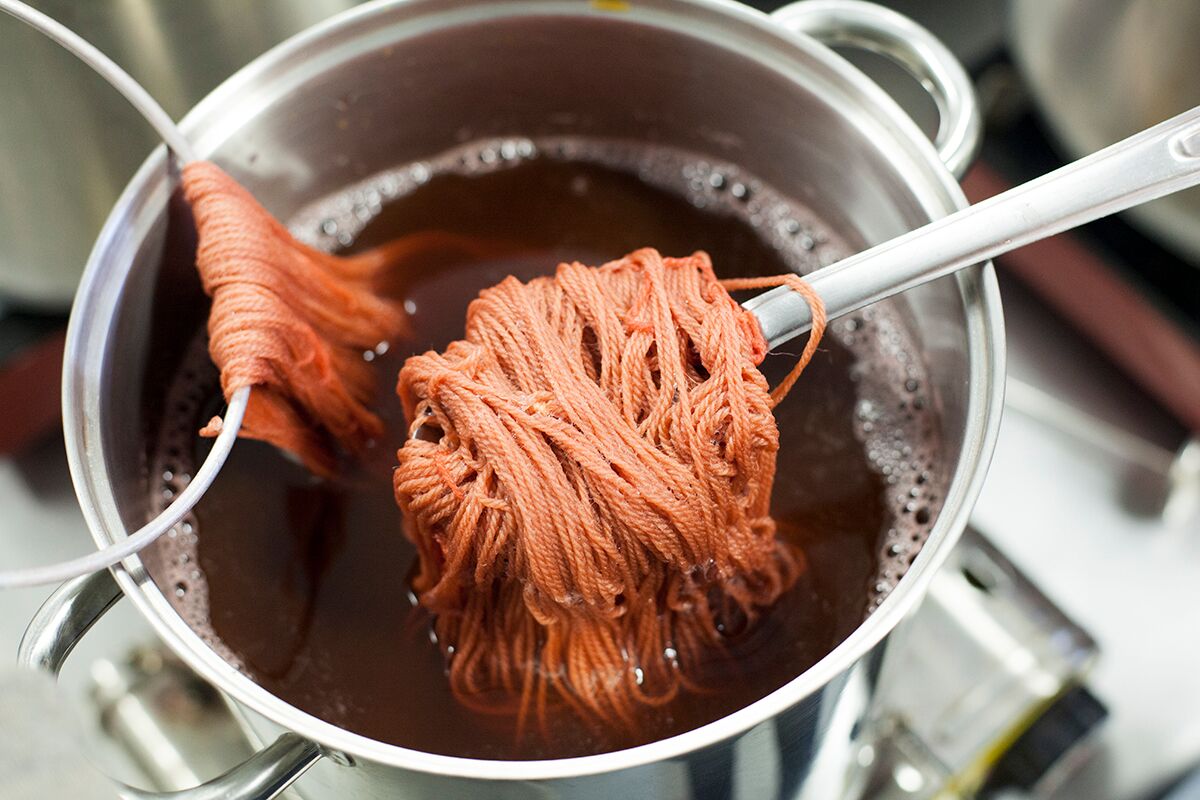This week on FEEDBACK FRIDAY: Too much dye on yarn and which natural dye extracts can be used without mordanting?
Every week for FEEDBACK FRIDAY, we are emailed with questions from our natural dye community asking simple and complex questions that we thought might be worth sharing. Of course, all of your burning questions are answered by natural dyer in chief, Kathy Hattori, Founder of Botanical Colors.
We have some yarn we dyed with Madder, and it doesn’t seem to be washing out. Meaning, we’ve washed it several times and can’t seem to get the water to run clear. Next time around, we will use less dye, but for now, do you have any advice on how to proceed?
Madder can be tricky to remove excess dye especially with wool yarn. The easiest way I’ve found to handle this is to let the yarn dry completely until it is bone dry, then let it cure for a few days. Then rinse it. The rinse out should be much less.
The factors that contribute to having this much rinse out are:
1. If you use calcium carbonate in order to make the color redder, try mixing the calcium separately, letting it settle and using only the clear liquid in the dye bath. Leave the calcium powder layer behind. All that calcium powder at the bottom is insoluble and attaches to wool yarn, and “sheds” for an extended time. You might need to perform this process twice to achieve the shade you desire.
2. If you are using ground madder root, enclose the root in a fine mesh bag prior to adding the yarn. Again, the sediment and madder root bits get embedded in the yarn.
3. Yarn that is not thoroughly scoured and clean of oil or lanolin can also “bleed” for an extended period of time.
*You indicated in a followup email that you are painting this yarn. Do note that painted skeins work best with the above cure process which helps preserve the color.
I’m very interested with linen at the moment and I would like to sew some clothes, but I would like also to dye them. I’m looking for an easy dye that I will not need to put something to fix the color before I dye it (I’ve read that there’s mostly 2 types of natural dye, the one where the fabric needs to be treated before and the one that can be just dyed like this).
So I’m looking for a dark color dye which is “easy” to realize. Can you advise me some maybe?
Also is there any way to remove the dye from a few areas to design/draw?
We recommend mordanting to achieve the best results but it is possible to dye with a tannin-rich dye such as chestnut, cutch, walnut or gallo-tannin combined with iron and not mordant. Your results may vary.
If you want to create a pattern, it’s possible to do this with a resist such as batik or paste-resist techniques. It is more difficult to discharge color from an already dyed piece.

